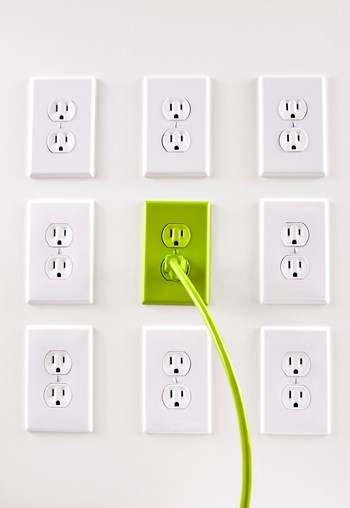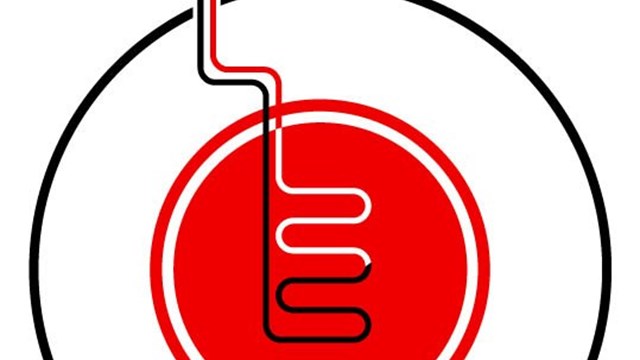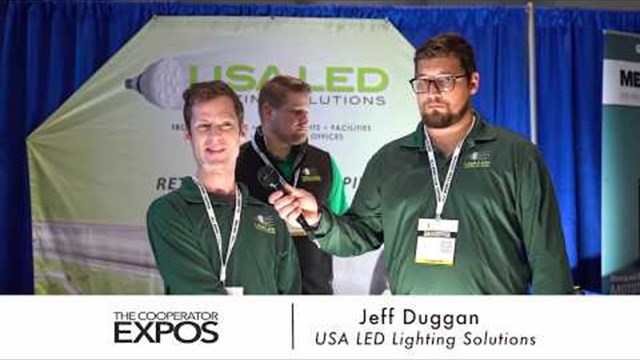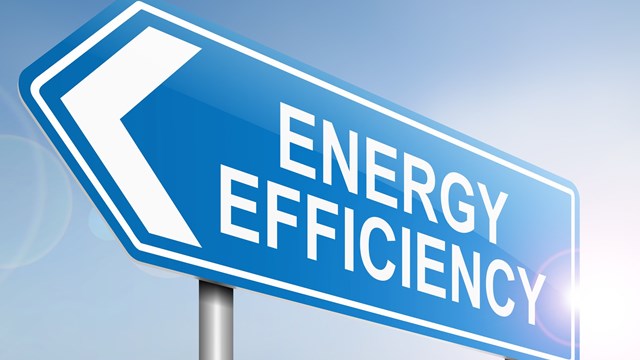
With gas prices rising steadily and everyone looking for ways to cut costs, New Jersey's utilities are doing what they can to help people invest in money-saving, energy-saving technologies and resources. From boilers to solar power to wind energy, utility companies and government agencies are giving consumers valuable incentives to choose the appliances and power sources that make the most out of the resources used to generate them. Agencies are even going so far as to provide financial rewards to builders who create energy-efficient housing, building green from the ground up, inside and out.
Why Change?
"Incentives are effective particularly because they can get people to accept new technologies," says Brian Castelli, vice president and chief operating officer of the Washington D.C.—based non profit Alliance to Save Energy, an organization which promotes energy efficiency worldwide.
Many of these incentive programs began with the creation of New Jersey's Clean Energy Program, established in 2003 in accordance with the Electric Discount and Energy Competition Act. The program provides financial and other incentives to the state's residential customers, businesses and schools which install high-efficiency or renewable energy technologies. The entire operation is managed by the New Jersey Board of Public Utilities' Office of Clean Energy.
As New Jersey Board of Public Utilities' Eric Hartsfield explains in an e-mail interview, "The Clean Energy Program expended $124.6 million to provide New Jersey homes and businesses with services and financial assistance that generated 382,845 megawatt hours of annual electricity savings, 617,261 D-therms of natural gas savings, and 29,136 megawatt hours of electricity generated from clean, renewable sources of energy." That's a lot of energy and that's a lot of savings.
What Does it Mean for Me?
For individual unit owners as well as associations, there are plenty of opportunities to save energy, save money and save the planet—without breaking the bank to get things off the ground. Incentives take the form of everything from free evaluations and technical advice to cash rebates to low-interest loans and tax deductions.
When starting out, it might be best to try the New Jersey Clean Energy program's Home Energy Analysis test. Offered online (www.njcleanenergy.com), the test will help you figure out where unit owners might have gaps in their efficiencies, whether those may be problems with not enough insulation or leaky windows or old, inefficient appliances.
These kinds of evaluations can prove to be great motivators when it comes to climbing on the energy-efficiency bandwagon. "It can make a big difference," Castelli says. "It opens people's eyes to what's happening. For example, if an auditor comes in and runs a blower door test, people can see where the leaks are." When that's fixed, unit owners notice more of a change. "It does make an impression on people."
Self-audits and professional audits also can help people spot aging and inefficient appliances, a goldmine of potential when it comes to reducing energy costs and getting rebates. "An old refrigerator can use up to three or four times the amount of energy as an Energy Star refrigerator," Castelli says. In 1973, refrigerators used 1,900 kilowatt hours per year. Today, for an energy efficient refrigerator, the number is under 500.
Beyond utility bill savings, utility companies will often provide cash rebates for large-scale appliances such as central air conditioning units, boilers, furnaces and water heaters. The Clean Energy program offers savings plans called COOLAdvantage and WARMAdvantage.
Through COOLAdvantage, residents can earn rebates of anywhere from $300 to $550 for buying and installing energy-efficient central air conditioners and heat pumps. People who install geothermal/ground source heat pumps can get $500 or more back, depending on the size of the unit.
With WARMAdvantage, the money back earnings on things like home heating systems and water heaters can range from $50 to $450. To earn these credits, all installations must be verified in writing by a contractor, ensuring that the devices have been properly sized and installed.
"Sometimes it's hard for people, because they're comparing that first cost out of pocket with long-term savings," Castelli says. Having to shell out a several hundred or several thousand dollars can be painful, but the investment will begin to pay off in a relatively short amount of time.
The Right Light
Utility companies and energy conservation organizations also are bullish on lighting. For homeowners, it can be a relatively low-cost investment. For associations, changing the lighting system from traditional incandescent bulbs to compact fluorescent lights can be a bit pricier initially, but again, take into consideration that electric lighting accounts for an average of 25 percent of a home energy bill, and it's easy to see this is a wise investment.
"You can't look at the cost of a 30 cent bulb versus a $5 bulb because there's more to it than that," says Bruce Pilger of Warshauer Electric, a seller of energy-efficient lighting. "The cost of not doing it is much greater than the cost of doing it."
Compact fluorescent bulbs produce more light through fewer watts, meaning if you usually light your living room with a 100 watt incandescent bulb, you can use a 25 watt compact fluorescent bulb instead. The fluorescents give off the same kind of light as the incandescent - not that institutional lighting that many people think of when they hear the word "fluorescent"—and the bulbs last an average of 10 times longer. For associations, that longer life can mean savings with regard to maintenance as well. Instead of the superintendent having to change bulbs every day, he will be able to devote his time to other, more pressing issues.
Pilger says that residents and associations can squeeze even more savings out of their lighting. Devices such as occupancy sensors can reduce electricity use, turning lights off when no one is in the room. For common areas or pool houses, items such as passive infrared sensors or ultrasonic occupancy sensors also will keep lights off and energy costs down.
New Jersey's Clean Energy program will sponsor Change-a-Light, Change-the-World this fall to encourage people to invest in energy-efficient lighting. It's worth it, Pilger says, to find out what kind of incentives are offered by the utility companies. "You have to make the calls," he says. "No one's coming to you to ask if you'd like us to save you money on electricity." It pays for homeowners, associations and managers to investigate and dig deep for savings.
Beyond the appliances and lighting, there are a number of state and federal agencies that provide low-interest incentive loans and other financial arrangements to make large-scale, energy efficient changes as painless as possible. The federal government also offers one-time income tax credits for homeowners. For co-ops and condos, improvements are apportioned to the owners and credited individually. A credit of up to $500 is offered for the installation of everything from new windows, insulation and doors to roofs and heating and cooling equipment. To earn that money back, the improvements must be "placed in service" from January 1, 2006 through Dec. 31, 2007, and all receipts must be kept.
A Little Altruism, a Little Profit
Free money, monthly savings, tax refunds. It almost seems too good to be true. It does raise the question, "Why would utilities and the government do this?"
For utilities, it's at least partially because of the heavy load being carried by power plants. If that load continues to grow—which it will with new houses and a growing population, that means extensive expenditures for utility companies. It makes more sense to try to reduce energy use.
As Hartsfield wrote, "In 2005, our clean energy programs saved enough electricity to provide the annual electricity requirements of approximately 50,000 homes in New Jersey. Perhaps even more significantly, when you add these savings to prior year savings, we have reduced electric demand by 450 megawatts, eliminating the need to site, construct and operate a mid-sized power plant." That's 50,000 new customers served without having to create more energy.
"There's a PR angle, too," Castelli says. With increasing awareness of issues such as global warming, it can help a utility to "start looking a little more green and show they're not polluting as much."
It also build goodwill with customers. When people are struggling to find enough cash in their wallets to fill the gas tank each week, it's good business to show homeowners how they can save.
Making it Work
To date, incentives have proven very popular and are having a positive impact on energy use, as evidence by Hartsfield's impressive numbers. Several years ago, the New York State Energy Research and Development Authority (NYSERDA) offered people $75 to turn in their aging, inefficient air conditioners. More than 180,000 people turned them in over one summer, helping the environment, saving energy and putting a few dollars in their pocket all at the same time. Today, people can go to their utility companies and get help on building an entire energy-efficient home.
Taking that first step toward efficiency can be daunting, but in the long run, everyone benefits. "Look up in a city and you'll see all the lights on," Pilger says. "Start doing the arithmetic and it all adds up."
Castelli agrees. "In general, these incentives are very effective. They provide a little more impetus to take action. Energy prices are rising every day. People know they're paying $30 to fill their gas tank rather than $10. Then they come home and look at their utility bill. Those prices are rising dramatically. If people can find any kind of help, they'll take it."
And they should. Energy efficiency makes sense for utilities and the government. It makes sense for families and associations. And it makes sense for the environment and the world we call home.
Liz Lent is a freelance writer and a frequent contributor to The New Jersey Cooperator.






Leave a Comment